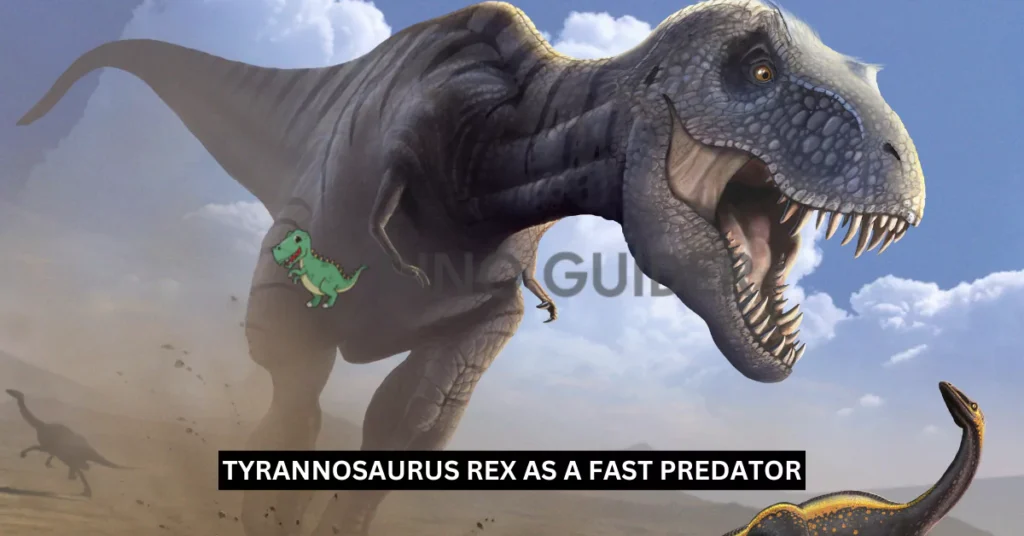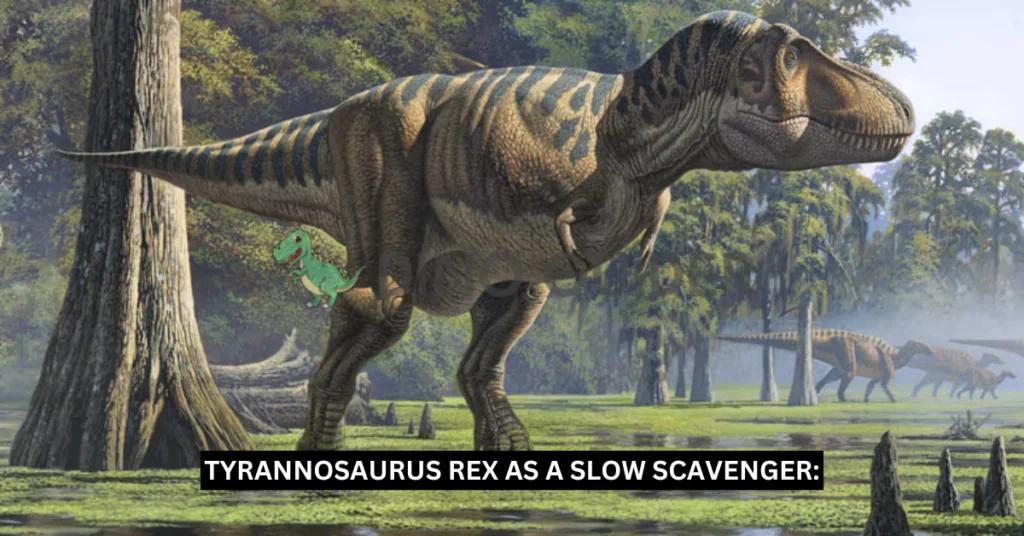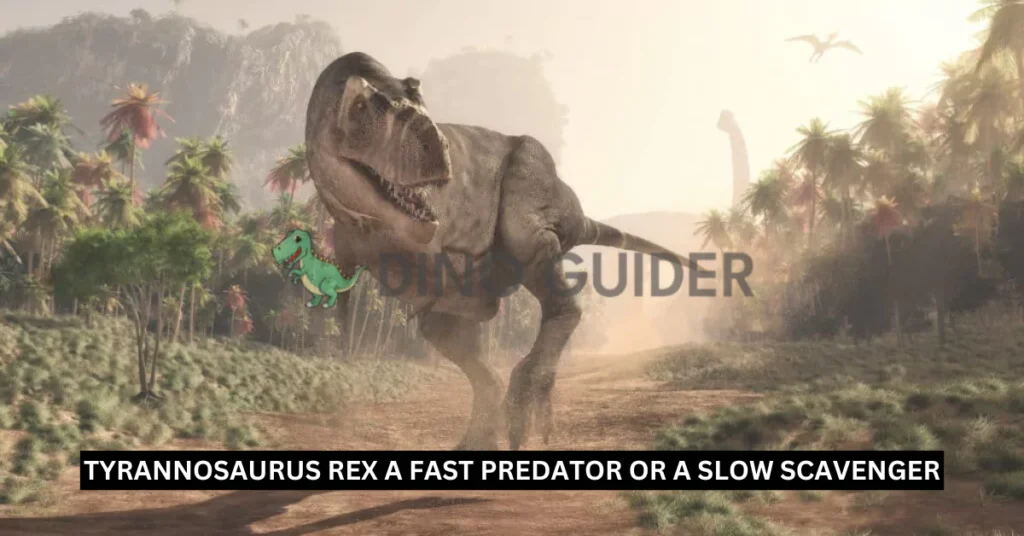Tyrannosaurus rex probably is one of the most debated dinosaurs by paleontologists and scientists themselves for quite a long time. For decades, its very nature-whether it was fast and agile, capable of chasing prey, or sluggish and slow, feeding on carrion and dead animals-was debated.
The answer has broad implications for our comprehension of the biology, ecology, and behavior of T. rex, and has been a hot topic in ongoing debate among scientists. Here, we delve into both sides of the argument, and review recent literature that brings to life the foraging style of the mighty T. rex.
Tyrannosaurus rex as a fast predator:
Tyrannosaurus rex, a massive theropod dinosaur that roamed North America during the Late Cretaceous period, has been a subject of fascination for scientists and the general public alike. Its impressive size, powerful legs, and razor-sharp teeth have led many to believe that it was an apex predator, capable of taking down even the largest of prey. However, the question remains: was T. rex a fast and agile hunter, or a slow and lumbering scavenger?

The debate surrounding T. rex’s hunting style has been ongoing for decades, with some scientists arguing that its size and weight would have made it difficult to move quickly, while others propose that its powerful legs and strong aerobic capacity would have allowed it to chase down prey with ease. In this outline, we will explore the evidence that suggests T. rex was a fast and efficient predator.
Evidence for speed
Tyrannosaurus rex had long, powerful legs that were well-suited for running and chasing prey. Its legs were built for speed, with a long femur and tibia, and powerful muscles that would have allowed it to generate a significant amount of force. Additionally, T. rex had a strong aerobic capacity, which would have enabled it to sustain long periods of high-intensity activity. This is supported by comparisons to modern bird leg structure, which show that T. rex had a similar leg-to-body-mass ratio as modern birds, known for their speed and agility.
Biomechanical modeling has also suggested that T. rex was capable of high running speeds, with some estimates suggesting that it could reach speeds of up to 40 km/h (25 mph). This is comparable to the running speeds of modern predators, such as lions and cheetahs. Furthermore, the presence of fast-twitch muscle fibers in T. rex’s legs suggests that it was adapted for short bursts of high-speed activity, making it well-suited for chasing prey.
Hunting behavior
If T. rex was a fast predator, it would have likely used active pursuit tactics to catch its prey. This would have involved chasing down prey over short distances, using its speed and agility to catch its quarry off guard. Ambush tactics may also have been used, with T. rex using its powerful legs to burst out of cover and catch prey by surprise. Additionally, some scientists have suggested that T. rex may have hunted in packs, using coordinated attacks to take down larger prey.
The presence of puncture wounds and tooth marks on the bones of other dinosaurs suggests that T. rex was an active predator, rather than a scavenger. Furthermore, the fact that T. rex had exceptional eyesight and binocular vision would have allowed it to spot and track prey over long distances, making it a formidable hunter.
Conclusion
In conclusion, the evidence suggests that Tyrannosaurus rex was a fast and efficient predator, capable of chasing down prey with ease. Its powerful legs, strong aerobic capacity, and biomechanical modeling all support this conclusion. Additionally, its hunting behavior, including active pursuit and ambush tactics, suggests that it was an apex predator, well-adapted to its environment. While the debate is ongoing, the evidence suggests that T. rex was a formidable hunter, and not a slow and lumbering scavenger.
Tyrannosaurus rex as a slow scavenger:
Tyrannosaurus rex, the largest theropod dinosaur to have ever existed, has long been thought of as an apex predator, capable of taking down even the largest of prey. However, some scientists have suggested that T. rex may have been a slow and opportunistic scavenger, rather than a fast and agile hunter. This idea is based on the fact that T. rex was a massive animal, with a large body size and weight that would have made it difficult to move quickly.

Additionally, T. rex had short arms and limited maneuverability, which would have made it difficult to catch and subdue prey. In this outline, we will explore the evidence that suggests T. rex was a slow and opportunistic scavenger, rather than a fast and efficient predator.
Evidence for slowness
Tyrannosaurus rex was a massive animal, with a body size and weight that would have made it difficult to move quickly. Its short legs and large body mass would have made it difficult to generate enough force to move at high speeds, and its powerful muscles would have been better suited for slow and deliberate movements. Additionally, T. rex had short arms and limited maneuverability, which would have made it difficult to catch and subdue prey.
Comparisons to modern crocodile and vulture scavenging behavior also suggest that T. rex may have been a slow and opportunistic scavenger. Like these modern animals, T. rex may have used its powerful sense of smell to locate carrion and then used its powerful jaws and teeth to feed on the carcass. Biomechanical modeling has also suggested that T. rex was not capable of high running speeds, with some estimates suggesting that it could only move at a pace of around 10-15 km/h (6-9 mph). This is much slower than other theropod dinosaurs, and even slower than some modern crocodiles.
Scavenging behavior
If T. rex was a slow scavenger, it would have likely used opportunistic feeding behavior to survive. This would have involved feeding on carrion and dead animals, rather than actively hunting and killing prey. The presence of tooth marks and puncture wounds on the bones of other dinosaurs suggests that T. rex was feeding on carcasses, rather than killing live prey.
Additionally, the fact that T. rex had a powerful sense of smell and exceptional eyesight would have allowed it to locate and feed on carrion from a distance. This scavenging behavior would have allowed T. rex to survive in a ecosystem with limited resources, and would have been an effective strategy for a large and slow-moving animal.
Conclusion
In conclusion, the evidence suggests that Tyrannosaurus rex was a slow and opportunistic scavenger, rather than a fast and efficient predator. Its large body size and weight, short arms and limited maneuverability, and biomechanical modeling all support this conclusion. Additionally, its scavenging behavior, including feeding on carrion and dead animals, suggests that it was well-adapted to its environment as a slow and opportunistic feeder.
While the debate is ongoing, the evidence suggests that T. rex was not the fast and agile hunter that it is often portrayed as, but rather a slow and efficient scavenger that played an important role in its ecosystem. This new perspective on T. rex’s behavior and ecology can help us better understand the biology and evolution of this fascinating dinosaur.
Comparative Conclusion
The debate surrounding Tyrannosaurus rex’s hunting style has led to two distinct perspectives: one that portrays it as a fast and efficient predator, and another that suggests it was a slow and opportunistic scavenger. While both arguments have their merits, a closer examination of the evidence reveals that the truth likely lies in a combination of both scenarios.
On one hand, T. rex’s powerful legs, strong aerobic capacity, and biomechanical modeling suggest that it was capable of high running speeds and was well-suited for active pursuit and ambush tactics. Its exceptional eyesight and binocular vision would have allowed it to spot and track prey over long distances, making it a formidable hunter.
On the other hand, T. rex’s large body size and weight, short arms and limited maneuverability, and comparisons to modern crocodile and vulture scavenging behavior suggest that it may have been a slow and opportunistic scavenger, feeding on carrion and dead animals. Its powerful sense of smell and exceptional eyesight would have allowed it to locate and feed on carcasses from a distance.
Ultimately, it is likely that T. rex exhibited a combination of both predatory and scavenging behaviors, adapting its hunting style to suit its environment and circumstances. Its impressive size, powerful legs, and razor-sharp teeth would have made it a formidable predator, capable of taking down even the largest of prey. However, its slow speed and limited maneuverability would have also made it an opportunistic scavenger, feeding on carrion and dead animals when the opportunity arose.
This comparative conclusion highlights the complexity and adaptability of T. rex’s behavior and ecology, and underscores the importance of considering multiple perspectives and evidence when reconstructing the biology of this fascinating dinosaur.
FAQs
What was the main debate about Tyrannosaurus rex?
The main debate was about its hunting style, with some scientists arguing it was a fast and efficient predator, while others believed it was a slow and opportunistic scavenger.
What evidence suggested T. rex was a fast predator?
Evidence included its powerful legs, strong aerobic capacity, biomechanical modeling, and comparisons to modern bird leg structure.
What evidence suggested T. rex was a slow scavenger?
Evidence included its large body size and weight, short arms and limited maneuverability, comparisons to modern crocodile and vulture scavenging behavior, and biomechanical modeling.
How did T. rex likely hunt its prey?
T. rex likely used a combination of active pursuit and ambush tactics, taking advantage of its speed and power to catch prey off guard.
What role did scavenging play in T. rex’s diet?
Scavenging likely played a significant role in T. rex’s diet, with the dinosaur feeding on carrion and dead animals when the opportunity arose.
How did T. rex’s sense of smell and eyesight help it survive?
T. rex’s powerful sense of smell and exceptional eyesight allowed it to locate and track prey, as well as find carrion and dead animals from a distance.
What does the debate about T. rex’s hunting style reveal about its biology and ecology?
The debate reveals that T. rex was a complex and adaptable animal, capable of exhibiting both predatory and scavenging behaviors depending on its environment and circumstances.




1 Comment
Pingback: Top 10 Misconceptions About T-rex: Debunking Myths of the Mighty Dinosaur - Dino Guider